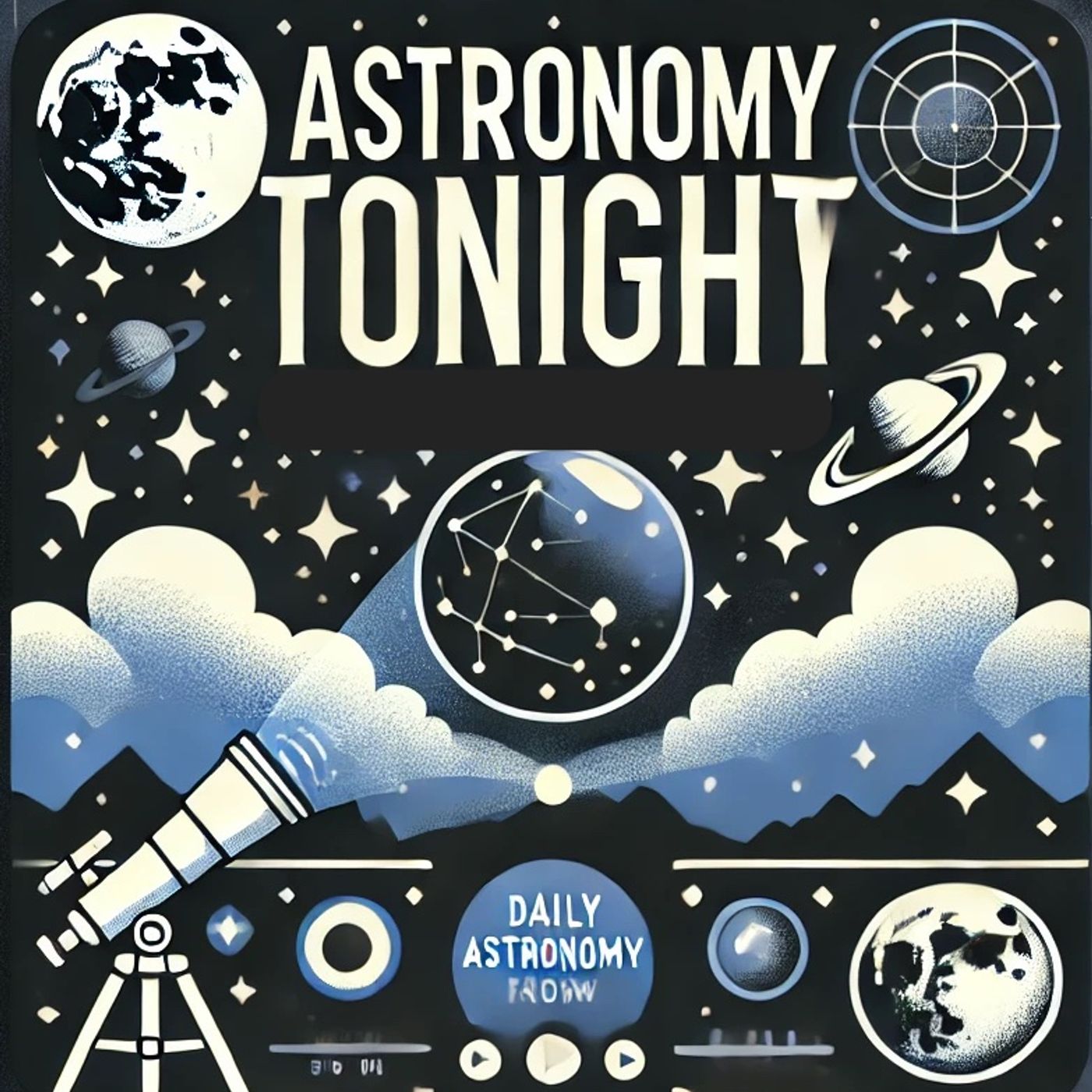Asteroid 2008 TC3: The First Tracked Cosmic Visitor to Earth
Update: 2025-10-10
Description
This is your Astronomy Tonight podcast.
On this day, October 10th, in the year 2008, a truly extraordinary event occurred that left astronomers worldwide both excited and perplexed. An asteroid, officially designated as 2008 TC3, became the first near-Earth object to be detected and tracked before it entered Earth's atmosphere and impacted the surface.
Picture this: It's a crisp autumn evening, and astronomers at the Catalina Sky Survey in Arizona are going about their routine observations when suddenly, they spot something unusual. A small, fast-moving object, no larger than a car, is hurtling towards Earth at breakneck speed. Within hours, observatories around the world are alerted, and a global effort to track this cosmic interloper begins.
As the asteroid entered Earth's atmosphere, it put on a spectacular light show over the Nubian Desert in Sudan. Eyewitnesses reported seeing a brilliant fireball streaking across the sky, brighter than the full moon. The asteroid exploded at an altitude of about 37 kilometers, showering the desert below with hundreds of small meteorites.
But here's where it gets really interesting, folks. This wasn't just any ordinary space rock. Analysis of the recovered fragments revealed that 2008 TC3 was an extremely rare type of asteroid known as an F-class asteroid. These elusive objects are thought to be some of the most primitive materials in our solar system, potentially holding clues about the early formation of planets and the origins of life itself.
The discovery and tracking of 2008 TC3 marked a significant milestone in our ability to detect and respond to potentially hazardous near-Earth objects. It demonstrated that with our current technology and global collaboration, we can identify even small asteroids before they reach Earth, potentially giving us crucial time to prepare if a larger, more dangerous object were ever on a collision course with our planet.
So, the next time you look up at the night sky, remember that there's a whole universe of wonders out there, some of which might be headed our way at this very moment!
If you enjoyed this cosmic tale, don't forget to subscribe to the Astronomy Tonight podcast for more fascinating stories from the depths of space. And if you're hungry for more mind-bending content, check out QuietPlease.AI. Thanks for listening to another Quiet Please Production!
This content was created in partnership and with the help of Artificial Intelligence AI
On this day, October 10th, in the year 2008, a truly extraordinary event occurred that left astronomers worldwide both excited and perplexed. An asteroid, officially designated as 2008 TC3, became the first near-Earth object to be detected and tracked before it entered Earth's atmosphere and impacted the surface.
Picture this: It's a crisp autumn evening, and astronomers at the Catalina Sky Survey in Arizona are going about their routine observations when suddenly, they spot something unusual. A small, fast-moving object, no larger than a car, is hurtling towards Earth at breakneck speed. Within hours, observatories around the world are alerted, and a global effort to track this cosmic interloper begins.
As the asteroid entered Earth's atmosphere, it put on a spectacular light show over the Nubian Desert in Sudan. Eyewitnesses reported seeing a brilliant fireball streaking across the sky, brighter than the full moon. The asteroid exploded at an altitude of about 37 kilometers, showering the desert below with hundreds of small meteorites.
But here's where it gets really interesting, folks. This wasn't just any ordinary space rock. Analysis of the recovered fragments revealed that 2008 TC3 was an extremely rare type of asteroid known as an F-class asteroid. These elusive objects are thought to be some of the most primitive materials in our solar system, potentially holding clues about the early formation of planets and the origins of life itself.
The discovery and tracking of 2008 TC3 marked a significant milestone in our ability to detect and respond to potentially hazardous near-Earth objects. It demonstrated that with our current technology and global collaboration, we can identify even small asteroids before they reach Earth, potentially giving us crucial time to prepare if a larger, more dangerous object were ever on a collision course with our planet.
So, the next time you look up at the night sky, remember that there's a whole universe of wonders out there, some of which might be headed our way at this very moment!
If you enjoyed this cosmic tale, don't forget to subscribe to the Astronomy Tonight podcast for more fascinating stories from the depths of space. And if you're hungry for more mind-bending content, check out QuietPlease.AI. Thanks for listening to another Quiet Please Production!
This content was created in partnership and with the help of Artificial Intelligence AI
Comments
In Channel





